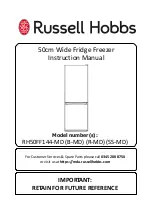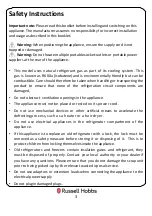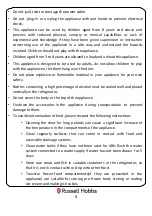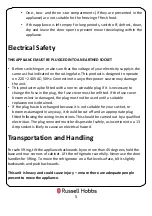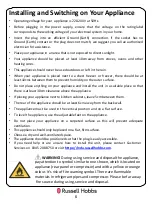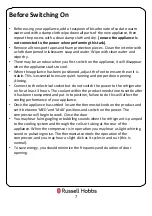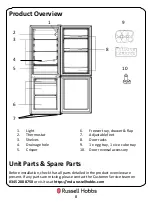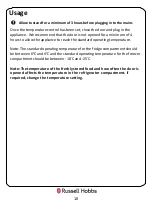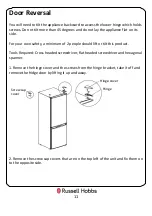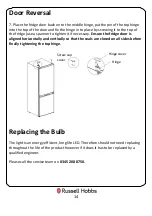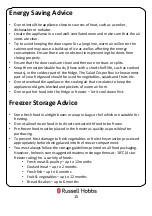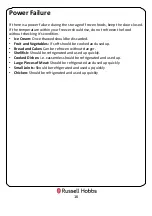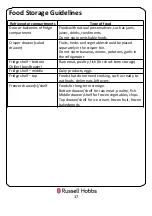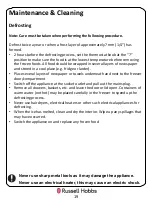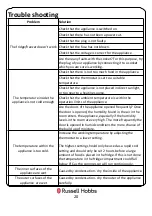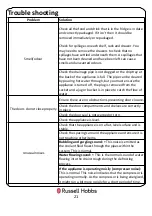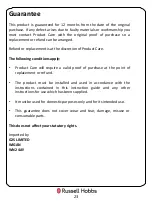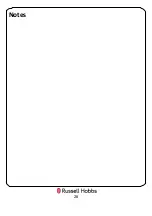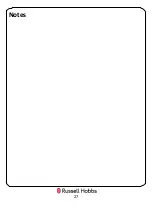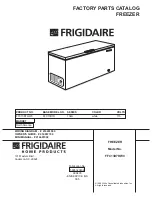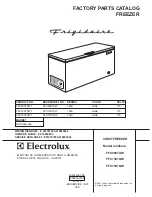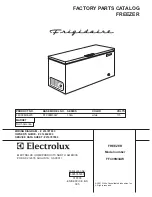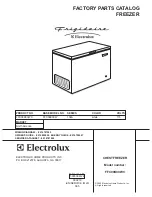
15
Energy Saving Advice
•
Do not install the appliance close to sources of heat, such as a cooker,
dishwasher or radiator.
•
Locate the appliance in a cool well-ventilated room and make sure that the air
vents are clear.
•
Try to avoid keeping the doors open for a long time, warm air will enter the
cabinet and may cause a build-up of ice as well as affecting the energy
consumption. Ensure there are no obstructions preventing the doors from
closing properly.
•
Ensure that the door seals are clean and there are no tears or splits.
•
Keep the most perishable foods, (those with a short shelf-life, such as cooked
meats), in the coldest part of the fridge. The Salad Crisper Box is the warmest
part of your fridge and should be used for vegetables, salads and fruits etc.
•
Do not overload the appliance: the cooling air that circulates to keep the
appliance cold gets blocked and pockets of warm air form.
•
Do not put hot food into the fridge or freezer
–
let it cool down first.
Freezer Storage Advice
•
Store fresh food in airtight boxes or wrap in bags or foil which are suitable for
freezing.
•
Do not allow frozen food in to direct contact with food to be frozen.
•
Pre-frozen food must be placed in the freezer as quickly as possible after
purchasing.
•
To prevent frost damage to fresh vegetables or fruits they must be processed
appropriately before being placed into the freezer compartment.
•
You must always follow the storage guidelines printed on all food packaging.
However, below is some suggested maximum storage times at -18°C (4 star
freezer rating) for a variety of foods:
•
Fresh meat & poultry
–
up to 12 months
•
Cooked meat
–
up to 2 months
•
Fresh fish
–
up to 6 months
•
Fruit & vegetables
–
up to 12 months
•
Bread & cakes
–
up to 6 months

